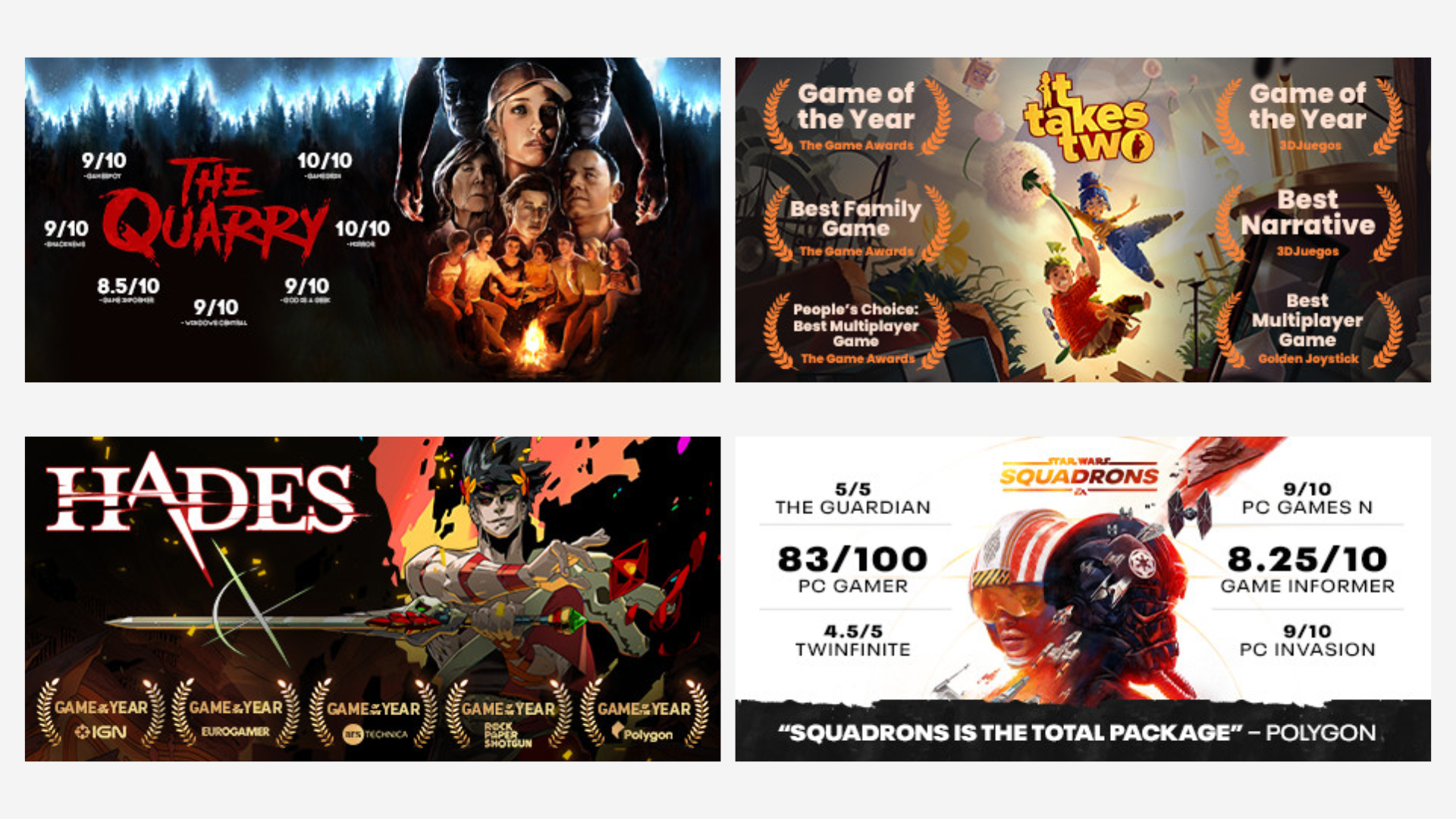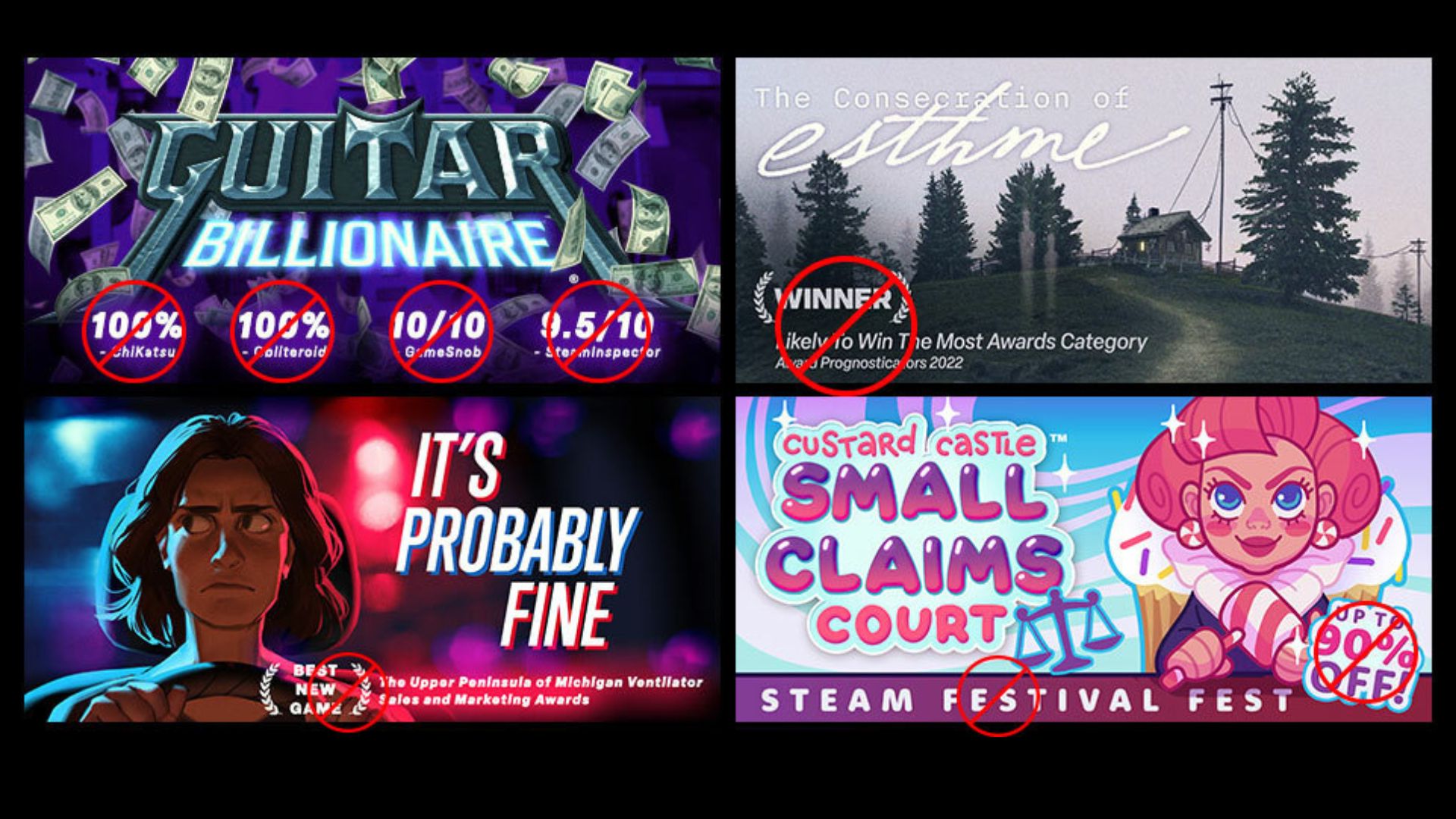Valve is changing the rules for developers on Steam, meaning they can no longer add review scores or awards to their game’s main store images.
The new rules will kick into effect on September 1, 2022, from which point on games like The Quarry, Hades and It Takes Two will need to update their imagery to match the clutter-free pics of games like Elden Ring.
Explaining its reasoning in an official blog post (opens in new tab), Valve said the move is to make finding and buying the best Steam games as “clear and straightforward as possible.” The review scores and award logos clutter up images making it hard for players to get a proper feel for the game, or even see what it’s called. Valve also claimed that some games were using out-of-date or inaccurate review scores adding even more confusion into the mix for customers.
So they’re going away, at least in certain images.
Steam store pages will still have a dedicated space for developers to share their awards and reviews, they’ll just require a bit of scrolling. Plus, the rules don’t seem to affect all images on a store’s page – just the game’s banner images or “Capsules”, which are the first pics you see of the game when you’re browsing the store.

If a developer wants to share an update post about how well its game has been received by critics with an image that’s full of scores and quotes, that should still be possible.
Additionally, Steam’s new ban on text won’t impact game logos nor will it stop developers from text highlighting new updates or if the game is on sale – but there are a couple of new restrictions.
Analysis: Judging games by their capsules
As the old adage goes: you can’t judge a book by its cover. But, if it has a bunch of reviews plastered to it, you would imagine you’d be provided with a good sense of whether it’s worth your time. But clearly, developers sharing misleading information is a problem, plus (as Valve points out) this typically English-only text can isolate players that can’t understand the language. Steam’s changes to capsule images make a lot of sense.
Looking at some of the awards and accolades being highlighted, it’s clear they’re not all of equal value – one image shared by Valve showed games celebrating their award in the “Likely to win the most awards” category. But with tiny text on the banner, you can only make out the “Winner” text without getting up close to your monitor.
Yet, this latest ‘purge all text’ plan doesn’t seem like the best solution.

While major AAA titles from the world’s biggest studios likely won’t need more than their company’s clout to stand out, smaller indie studios can struggle. If a player has never heard of a game before, or the people that made it how can its titles hope to be picked out in the sea of games released daily on Steam?
Being able to share review scores in that first image players see is clearly a good strategy to combat this. Steam store browsers would see that the title is rated well at a glance and as a result would likely be encouraged to click through to the game’s page to learn more. However, this is no longer going to be an option.
Instead, Valve could have set rules on what awards and reviews can be used – perhaps limiting it to only certain approved outlets. And to get around any language barriers it could also require the developers to create localized images for each region it’s selling its game in – rules that it’s already bringing in for images that want to include sale details.
Steam already struggles with game discoverability and this latest move feels like more of a step back than a step forward. We’ll have to wait and see if Valve decides to cancel the change or find a new strategy, but come September 1 be prepared for it to become a little harder to find Steam’s hidden gems.
If you’re looking for a new game to play check out our picks for the best PC games we’ve played.




